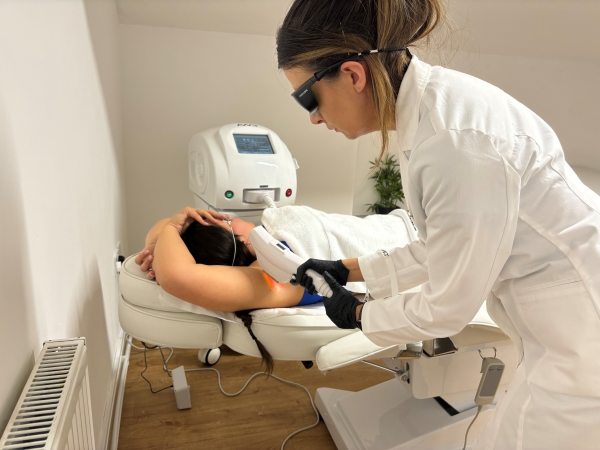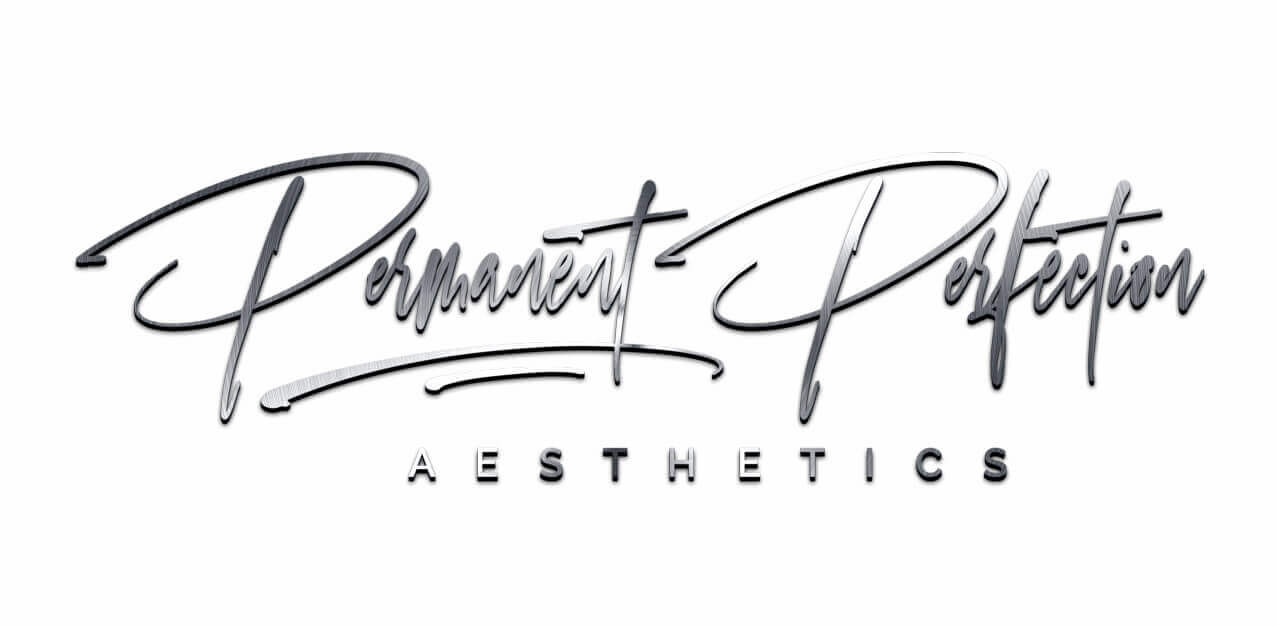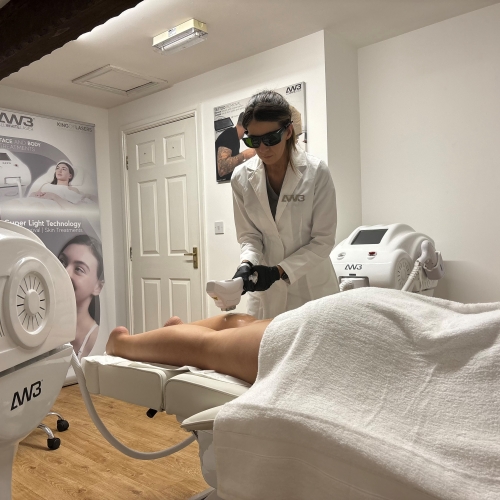Hair Removal Technology: The Differences Between 1st, 2nd, and 3rd Generation
Hair Removal Technology – In our quest for smooth, hairless skin, the beauty industry has seen a revolution in the advancement of hair removal technology. From the ancient practice of sugaring to the advent of cutting-edge procedures, the methods and technologies used to say goodbye to unwanted hair have continuously evolved. Understanding the differences between various generations of hair removal technology is crucial in making an informed decision about which method best suits your needs.
Hair Removal Technlogy – A Quick Overview of the Evolution
Ancient Egyptians used pumice stones, beeswax, and other primitive tools for hair removal. Fast forward to the 20th century, and we saw the dawn of 1st generation hair removal technology: the simple and straightforward depilatory creams. The 2nd generation brought us electrolysis, and then, the grand reveal of laser hair removal with the CO2 laser, marking the beginning of the 3rd generation technology. As time progressed, the advancements paved the way for quicker, more effective, and less painful solutions, stimulating more people to turn to technology for their hair removal needs.
Defining 1st Generation Hair Removal Technology
The 1st generation of hair removal technology includes the initial methods that mechanized hair removal. These are often simple and rely on applying a depilatory substance or using a mechanical process that is non-electronic.
Examples of 1st Generation Technology
- Depilatory Creams: Alkaline chemicals break down hair so it can be wiped away.
- Razors: Manual devices for shaving hair.
- Wax Strips: Applying hot or cold wax to the skin, then removing the hair by stripping the wax off.
The Pros and Cons of 1st Generation
Pros
- Convenience: Many 1st generation methods can be done at home.
- Accessibility: Low cost and easy to obtain.
- Immediate Results: Hair is removed at the surface level, effect is seen right away.
Cons
- Temporary: Most 1st generation methods only remove hair temporarily.
- Irritation: Shaving and depilatory creams can be harsh on the skin.
- Regrowth: Hair typically begins to grow back within several days to weeks depending on the method used.
2nd Generation Hair Removal Technology
2nd generation hair removal technology is characterized by the use of electrolysis, a procedure where an electrical current is passed through a needle to the hair follicle, destroying the root.
Examples of 2nd Generation Technology
- Electrolysis Machines: In-home and professional devices for permanent hair removal.
- IPL (Intense Pulsed Light): A type of being that is highly intense and unprotected, as they target cells with color in the skin, targeting hair while avoiding skin.
- Blend Method: A combination of thermolysis and electrolysis for more efficient hair removal.
The Pros and Cons of 2nd Generation
Pros
- Long-term Results: Electrolysis is approved by the FDA for permanent hair reduction.
- Precise: Able to target individual hairs or specific areas.
- Safe for All Hair and Skin Types: Laser hair removal is more selective, but electrolysis can be used by all.
Cons
- Time-Consuming: The process can be slow, especially for large areas.
- Can Be Painful: Less comfortable than some other methods.
- Potential for Scarring: If not done properly, scarring can occur.
3rd Generation Hair Removal Technology
The 3rd generation of hair removal technology is one that uses laser and light-based treatments, a step up from electrolysis in terms of precision and speed.
Examples of 3rd Generation Technology
- Alexandrite Lasers: Typically used on people with light-to-olive complexion, in which the skin is ghosting.
- Nd:YAG Lasers: Suitable for all skin types, including deeply tanned skin.
- Super Hair Removal (SHR) Suitable for all skin types, quick and gentle on the skin
The Pros and Cons of 3rd Generation
Pros
- Speed: Large areas such as the back or legs can be treated on relatively quickly.
- Effectiveness: The most permanent hair reduction
- Reduced Pain: SHR & Laser treatments are considerably more comfortable than electrolysis
Cons
- Cost: 3rd generation treatments can be more expensive than other methods.
- Session Requirements: Multiple sessions are usually required for optimal results.
- Maintenance Sessions: Long-term success usually involves subsequent ‘touch-up’ sessions over time.

Comparison of 1st, 2nd, and 3rd Generation Technology
Key Differences and Advancements
1st generation tech laid the groundwork for simplicity and accessibility. 2nd generation delved into permanency. 3rd generation brought us a balance of speed and efficiency, marrying precision with comfortable, well-tolerated treatments.
Effectiveness and Efficiency
The evolution towards 3rd generation is primarily about efficacy. While 1st and 2nd generation are great for temporary and longer-term solutions, 3rd generation is the closest to offering a permanent reduction.
Cost Considerations
As technology advanced, so did the cost. While 1st generation is the most affordable, 3rd generation typically requires a larger upfront investment, albeit with potential long-term savings from other methods of temporary hair removal.
Choosing the Right Hair Removal Technology – Factors to Consider
When deciding on a hair removal method, there are multiple factors to take into consideration. These include the area you want to treat, your skin type, pain tolerance, and most importantly, the results you are looking to achieve.
Matching Technology with Individual Needs
Your unique hair removal journey depends on a variety of individual preferences. For instance, if you’re looking to treat a large area like your legs, the speed of 3rd generation technology such as Soprano Ice Platinum can be an advantage. If you have a lower pain threshold, you might favor a laser treatment over electrolysis.
Consulting with Professionals
A consultation with a professional aesthetician or a dermatologist can provide invaluable insights into the best approach for your hair removal journey. Professionals can assess your individual needs and guide you in selecting the right treatment for your circumstances.
In-Depth Look at Super Hair Removal (SHR): A Revolution in Hair Removal
Super Hair Removal, or SHR, is an advanced application of IPL hair removal. The key to SHR’s cutting-edge approach is the gradual heating method, where the therapist utilizes low energy but with high frequency, so the hair follicles are not subjected to a single high energy pulse that can cause trauma to the skin with a risk of burning. SHR therapy aims at gradually increasing the temperature of the hair follicle, leading to a comfortable yet effective treatment for a wide range of skin and hair types.
Customizing Your Hair Removal Experience
With the advent of SHR, the customization of your hair removal experience has reached a new echelon. Super Hair Removal treatment systems have settings that can be optimized based on your skin type, hair thickness, and targeted area, guaranteeing a custom-tailored procedure for each individual.
Conclusion
Understanding the progression of hair removal technology is not only fascinating but crucial. By knowing the differences between 1st, 2nd, and 3rd generation technologies, you can make an informed choice that aligns with your goals and comfort levels. Whether you opt for the DIY approach of 1st generation or the precision and power of 3rd generation, the journey to smoother skin is vast, and the possibilities are endless. Most importantly, choose a method that not only suits your needs but also respects the health and integrity of your skin. If you’re starting your journey, consult with professionals and be an active participant in the process. After all, your comfort and confidence are at the forefront of it all.


Recent Comments